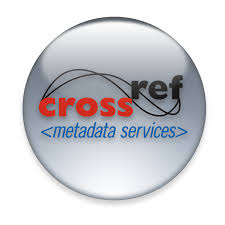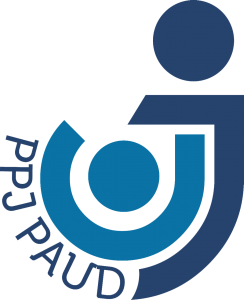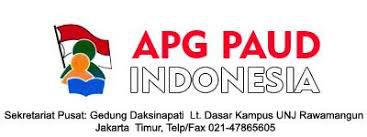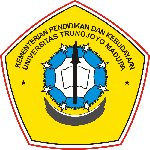Author Guidelines
The manuscript texts are written in English or Indonesian. Manuscripts will be first reviewed by editorial boards.The main text of a manuscript must be submitted as a Word document (.doc) or Rich Text Format (.rtf) file. The manuscript consists of 4000 words (minimum), well-typed in single column on A4 size paper, use 12 pt of Times New Roman.The manuscript contains an original work and have potentially contribute to the highly scientific advancement.
The manuscript should contain the following section in this order:
a. Title
Title of articles in English should describe the main content of manuscripts, be informative, concise, and not too wordy (14-16 words only), and does not contain formulas.
b. The author’s name
Full name without academic degrees and titles, written in capital letters. Manuscript written by groups needs to supplemented by complete contact details.
c. Name of affiliation for each author
The author name should be accompanied by complete affiliation address, postal code number, and email address.
d. Abstract
Written briefly in Indonesian and English in one paragraph of 200-300 words, containing background, research objectives, methodology, results, conclusion of the study and your research contributions to science.
e. Keywords
Written in English 3-5 words or groups of words, written alphabetically.
f. Introduction
Explaining the background, problems, importance of research, brief literature review that relates directly to research or previous findings that need to be developed, and ended with a paragraph of research purposes. A balance must be kept between the pure and applied aspects of the subject.The introduction is presented in the form of paragraphs of approximately 1000 words.
g. Methods
Make sure that work can be repeated according to the details provided. It contains technical information of the study presented clearly. Therefore, readers can conduct research based on the techniques presented. Materials and equipment specifications are necessary. Approaches or procedures of study together with data analysis methods must be presented.
h. Results
The main part of a scientific article which contains research results and results of hypothesis testing. Results can be presented with tables or graphs, to explain the results verbally. The results simply explain the findings in the field in real terms without including references in the form of books and articles.
i. Discussion
Authors should discuss the results and how they can be interpreted from the perspective of previous research and working hypotheses. The findings and their implications should be discussed in the widest possible context. Future research directions can also be highlighted. The purpose of the discussion is to answer research problems, interpret findings, integrate findings from research into existing body of knowledge and develop new theories or modify existing theories.
j. Conclusion
Conclusion should be withdrawn on the basis of research findings, formulated concerns and research purposes. Conclusion is presented in one paragraph without numerical form of expression. Explain your research contributions to science.
k. Acknowledgement
Contributors who are not mentioned as authors should be acknowledged, and their particular contribution should be described. All sources of funding for the work must be acknowledged, both the research funder and the grant number (if applicable) should be given for each source of funds
l. References
Manuscripts are written by using standard citation application (Mendeley/Endnote/Zotero). APA (American Psychological Association) 7edition reference style is required. Citing an article written by two authors, both of authors should be mentioned, however, for three and more authors only the first author is mentioned followed by et al., for example: Rahayu & Sudarsono (2018), Subekti et al. (2019). A series of references should be presented in ascending date order (Retnoningsih et al., 2020; Indriyanti et al., 2021; Rahayuningsih, 2022). Different publications with the same author(s) and year will be presented separately, as follows 2021a, 2021b. References of unpublished data and personal communication should not appear in the list but should be cited in the text only (e.g., Rifai MA 2022, pers. com. (personal communication); Indriyanti DR 2022, unpublished data). In the reference list, the references should be listed in an alphabetical order. More or less 80% references for literature reviews should be the recent (up to date) journals published in the last 5 years, but the rest of 20 % references can be cited from research reports and or articles.
The following are examples of bibliography writing:
Article:
Hasni, U., & Amanda, R. (2022). Pengembangan Model Pembelajaran Project Based Learning Untuk Meningkatkan Kemampuan Geometri Anak Usia 5-6 Tahun. Jurnal PG-PAUD Trunojoyo: Jurnal Pendidikan dan Pembelajaran Anak Usia Dini, 9(1), 1-11. https://doi.org/10.21107/pgpaudtrunojoyo.v9i1.13537
Tesar, M. (2020). Towards a Post-Covid-19 ‘New Normality?’: Physical and Social Distancing, the Move to Online and Higher Education. Policy Futures in Education, 18(5), 556–559. https://doi.org/10.1177/1478210320935671
Book:
Latif, M. A. 2021. Edupreneurship Pendidikan Anak Usia Dini. CV. Multiartha.










